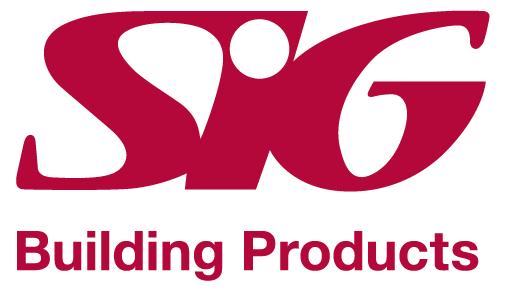
Having recently held our first Women in Construction event and with International Women’s Day around the corner we wanted to highlight how diversity in the construction sector can benefit everyone.
Construction is one of the largest industries in Ireland, contributing over 10% of the country’s Gross Domestic Product (GDP), yet despite its size and importance, women have traditionally represented only a small percentage of the workforce.
In recent years, we have seen a push for greater gender diversity in the sector, with many organisations working to promote the participation and advancement of women in construction.
Women are underrepresented in the construction sector
According to the CSO Labour Force Survey, women made up just 9% of the construction workforce in Ireland in 2022.
This is a significant increase from previous years, but there is still a lot more that can be done to increase female participation in the construction industry.
Women are under-represented in both skilled and unskilled positions in construction, with only 5% of skilled tradespeople and just over 1% of apprentices being female.
How can diversity help the male-dominated industry?
Despite the low numbers of women working in construction, there is evidence to suggest that their participation can bring many benefits to the industry.
Research has shown that gender diversity leads to improved decision-making, increased creativity, and enhanced innovation.
Companies with greater gender balance are also more likely to outperform those that lack diversity, making the case for increased female representation in construction all the more compelling.
Why are women underrepresented in the construction industry?
Despite the fact that the construction sector is traditionally known as a male-dominated industry, the low number of women working in construction can be attributed to a number of factors, including:
- a lack of awareness of the opportunities available in the sector
- a lack of female role models and mentors
- a perceived lack of flexibility in the industry
However, there are many initiatives underway to address these barriers and promote the participation of women in construction.

Photograph: Alan Betson / The Irish Times
The Irish construction industry needs more skilled workers
The global financial crisis of 2008 had a significant impact on Ireland’s construction industry, leading to a sharp decline in the number of construction projects and a significant reduction in the workforce. According to the Central Statistics Office of Ireland, the construction industry employed over 250,000 people in 2006, but this number fell to less than 140,000 by 2012.
Since the recession, Ireland’s construction industry has been struggling to rebuild its skilled labour force, due to a combination of factors, including emigration, retirement, and a lack of investment in training and development.
This has led to a shortage of skilled workers in the industry, which has impacted the ability of the industry to grow and meet the demands of the market.
In recent years, there have been efforts to address the skills shortage in the construction industry, including investment in training and development programs and initiatives to encourage more young people to pursue careers in the sector.
However, rebuilding the skilled labour force in the construction industry remains a significant challenge for Ireland. Price inflation in Ireland is forcing many foreign skilled workers to return home and many young educated people to emigrate.
The government and Solas, the Further Education and Training Authority in Ireland, have identified skill shortages in quantity surveyors, civil engineers & construction project managers, plumbers, and carpenters.
What initiatives is the Irish Government taking to encourage more females to enter the construction workforce?
The Irish government and Solas, the Further Education and Training Authority in Ireland, are implementing a number of initiatives to encourage more women to enter the construction workforce in Ireland. Some of these include:
- Solas: They fund and support programmes that provide hands-on experience and exposure to different trades and professions within the industry, as well as mentorship and networking opportunities.
- Apprenticeship programs: Solas offers apprenticeship programmes in a variety of construction trades, including carpentry, plumbing, and electrical work, among others. These programmes provide young women with the opportunity to gain hands-on experience and formal qualifications in their chosen trade.
- Construction Industry Federation (CIF): The CIF is a representative body for the construction industry in Ireland. They work closely with the government and Solas to develop and implement initiatives to encourage more women to enter the construction workforce, including targeted training programmes and apprenticeship schemes.
- Career Awareness Initiatives: The government and Solas also provide funding for career awareness initiatives aimed at encouraging young women to consider careers in the construction industry. This includes programmes that provide hands-on experience and exposure to different trades and professions within the industry, as well as mentorship and networking opportunities.
- Promoting Gender Equality: The government and Solas also support initiatives aimed at promoting gender equality in the workplace, including awareness campaigns and training programmes for employers and employees. This helps to create a more inclusive and supportive work environment for women in the construction industry.
Construction Industry Federation inspiring females to work in construction
The Construction Industry Federation (CIF), for example, has launched the “Building Equality” initiative, aimed at attracting more women into the industry and promoting their advancement.
The initiative provides information, support and networking opportunities to women working in construction, as well as raising awareness of the benefits of gender diversity in the sector.
They are also actively sharing inspiring stories of women working in civil engineering, on construction projects, as site engineers, safety advisors, project managers, mechanical engineering and quantity surveyors to show women the importance of their roles in construction.
The stories are aimed to inspire women in the industry and women or girls to consider a career in construction.
Inspiring young women to start a career in construction
There are several initiatives aimed at encouraging young girls to consider a career in construction in Ireland. Here are some examples:
- STEM Outreach Programs: STEM outreach programmes provide young girls with hands-on experience and exposure to different trades and professions within the construction industry. These programmes aim to encourage girls to consider careers in STEM, including construction, and to help break down gender stereotypes.
- Career Awareness Days: Career awareness days provide young girls with the opportunity to meet and speak with female construction workers and learn about different careers within the industry. These events aim to increase awareness of the opportunities available in the construction industry and to encourage girls to consider careers in the sector.
- Apprenticeship Programmes: These programmes provide young girls with the opportunity to gain hands-on experience and formal qualifications in a variety of construction trades, including carpentry, plumbing, and electrical work, among others.
- Mentorship Programmes: These programmes provide young girls with the opportunity to work with and learn from female construction workers. They aim to provide girls with role models and encourage them to pursue careers in the industry.
- School Outreach Programs: These aim to raise awareness of the opportunities available in the construction industry and to encourage girls to consider careers in the sector. They provide young girls with information on different trades and professions within the industry, as well as information on apprenticeship and training opportunities.
These initiatives aim to promote the sector as a viable and rewarding career option for women and to raise awareness of the opportunities available.
By inspiring girls to pursue careers in construction, these initiatives aim to lay the foundation for a more gender-diverse future for the industry.
Despite the progress that has been made in promoting the participation of women in construction, there is still much work to be done to achieve gender equality in the industry.
Challenges the construction industry faces in gender equality
A key part is to address the perception that construction is a male industry and to promote it as a viable and rewarding career option for women.
Although there are gender-specific roles, these are becoming less and less with technological advancements. It needs to be a sector that more girls are considering from a young age or when they are finished college.
Additionally, it is important to address the structural barriers that prevent women from entering and advancing in the sector, such as a lack of flexible working arrangements and a lack of female role models and mentors.
The benefits for females working in construction
Now is the perfect time for women to consider a job in construction. The construction industry needs more qualified men and women help with low supply and keep up with the growing demand.
There are many roles available for women in construction – whether it’s on a building site, in health and safety, quantity surveying or as a managing director.
Construction companies are aware women are underrepresented in their workplace. They understand the benefit of gender diversity and are actively looking to close the gap. Skilled female construction workers and women looking for a job in construction are in demand.
Across all industries, there is a pay gap between men and women, which sits at an average of 14% in Ireland. The construction industry has one of the smallest pay gaps between women and men.
Despite other industries in Ireland, the construction industry is still growing and has been for over ten years.
There is a lot of opportunity for career progression and growth, investment in people development and an opportunity to work with different cultures and sectors – construction provides all of these opportunities.
How does Ireland compare to other countries with its current stats on female participation in the construction sector?
The percentage of Women working in construction is 10.9% of the entire U.S. workforce in 2022. While In the UK, the percentage is slightly higher at 14%. Although Ireland scores lower at 9%, the country had reached 11% in 2019 before COVID.
In comparison to other European countries, Ireland’s performance on female participation in the workforce is mixed. Some countries, such as Sweden and Finland, have higher levels of female participation, while other countries, such as Italy and Greece, have lower levels.

Increasing female participation in construction at SIG
At SIG Ireland, 30% of our workforce is female – a number that we strive to increase. We are proud to have strong female representation right across our business, with 2 representatives on our Senior Leadership Team and female managers across our central functions and branch locations.
Some of our longest-standing team members are female and with the company for over 15 years, and with our growing representation we are sure that we will continue to grow a positive and inclusive organisational culture, with improvement in processes and group collaboration.




Women In Construction lunch at SIG
SIG was honoured to host their inaugural “Women in Construction Lunch” at the Ivy Restaurant on Dawson Street last Friday, the 27th of January this year.
The event was organised to recognise women’s significant contribution to the construction industry in Ireland and to discuss the opportunities and challenges that come with working in a male-dominated industry.
We were joined by talented women from many of our customers and suppliers and all had a fantastic day.
Our guest speaker was Carole Ann Clarke, the former Captain of the Ireland Women’s Rugby Team, who spoke about leading her team from a time when it was unheard of for women to play rugby, to merging with the IRFU and fighting for recognition in a male-dominated sport.
Construction as we know is also a male-dominated industry, with women making up just 9% of the construction workforce in Ireland.
It is also one of the largest industries in Ireland. Increasing female participation in the industry can help to improve decision-making, enhance innovation and deliver higher financial returns.
Conclusion
In conclusion, the low number of men and women working in construction in Ireland is a concern.
There is evidence to suggest that the participation of women in the industry can increase low numbers and bring many benefits, and there are many initiatives underway to address the barriers that prevent their participation.
By working together, we can help create a more gender-diverse and inclusive construction industry in Ireland, one that is better for everyone.
More women in construction will lead to a more productive, diverse and efficient industry and this benefits us all.
If you are a woman in construction and you are good at what you do, the opportunities to succeed in the construction industry have never been better. You can check out the vacancies at SIG here.
While traditionally construction industry was not an option for a woman, continued expansion is changing previously held beliefs and the construction industry has recognised that female participation is vital to its success.
Technology and investment in people are making construction a vast and diverse industry and the benefits of gender diversity can be immense.



